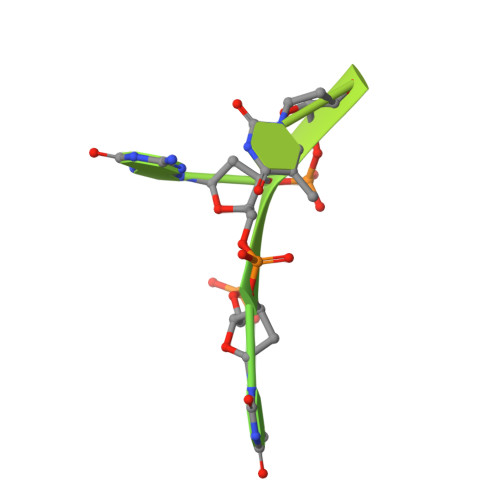Cellular mRNA triggers structural transformation of Ebola virus matrix protein VP40 to its essential regulatory form.
Landeras-Bueno, S., Wasserman, H., Oliveira, G., VanAernum, Z.L., Busch, F., Salie, Z.L., Wysocki, V.H., Andersen, K., Saphire, E.O.(2021) Cell Rep 35: 108986-108986
- PubMed: 33852858
- DOI: https://doi.org/10.1016/j.celrep.2021.108986
- Primary Citation of Related Structures:
7K5D, 7K5L - PubMed Abstract:
The Ebola virus matrix protein VP40 forms distinct structures linked to distinct functions in the virus life cycle. Dimeric VP40 is a structural protein associated with virus assembly, while octameric, ring-shaped VP40 is associated with transcriptional control. In this study, we show that suitable nucleic acid is sufficient to trigger a dynamic transformation of VP40 dimer into the octameric ring. Deep sequencing reveals a binding preference of the VP40 ring for the 3' untranslated region of cellular mRNA and a guanine- and adenine-rich binding motif. Complementary analyses of the nucleic-acid-induced VP40 ring by native mass spectrometry, electron microscopy, and X-ray crystal structures at 1.8 and 1.4 Å resolution reveal the stoichiometry of RNA binding, as well as an interface involving a key guanine nucleotide. The host factor-induced structural transformation of protein structure in response to specific RNA triggers in the Ebola virus life cycle presents unique opportunities for therapeutic inhibition.
Organizational Affiliation:
La Jolla Institute for Immunology, La Jolla, CA 92037, USA.















